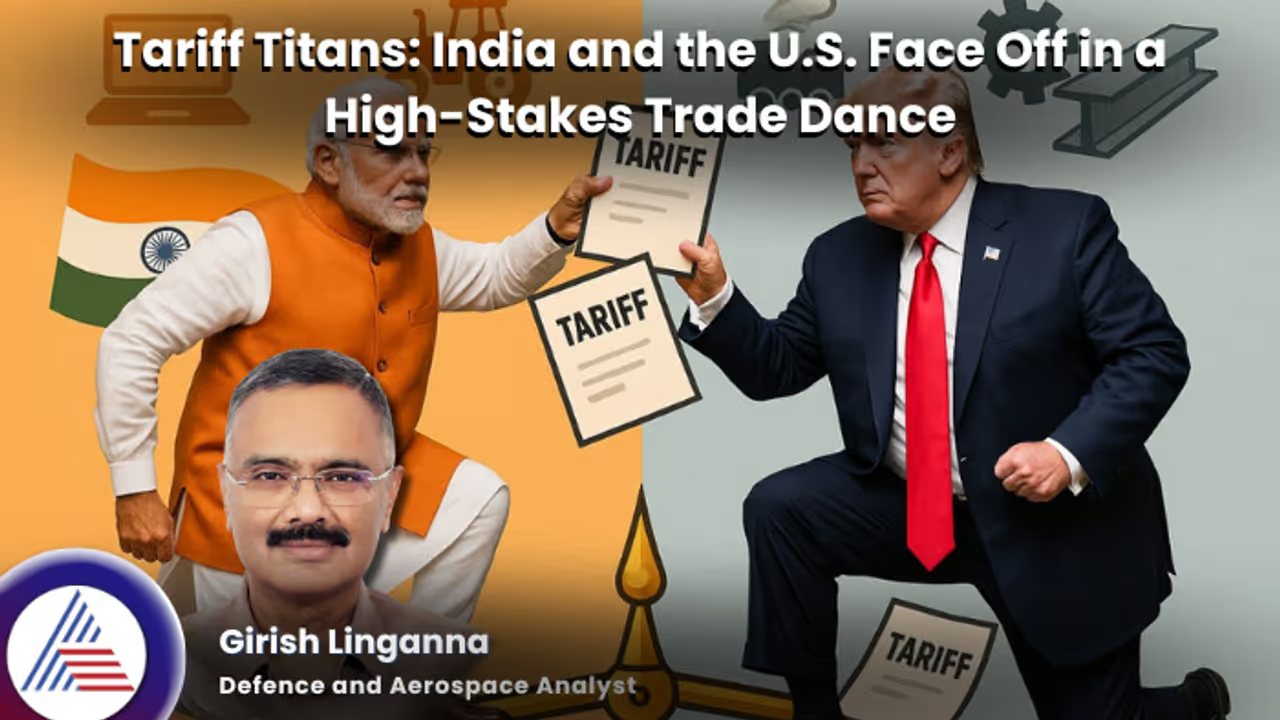India faces a trade standoff with Trump as new US tariffs challenge Modi’s economic ambitions and bilateral negotiations.
Donald Trump wasn’t entirely off the mark when he branded India the “tariff king.” The roots of that title stretch back to India’s first Prime Minister, Jawaharlal Nehru, who saw foreign trade as a potential threat to national independence, echoing the perils of colonization. Admiring the Soviet Union’s self-reliant model, Nehru charted a protectionist course, with the government tightly gripping the economy and trade. This approach held firm for decades until the Soviet Union’s collapse in 1991 jolted India into economic reforms, prying open its markets.

Even after liberalization, India’s import taxes remained steeper than those of many nations, a pattern that deepened over the last ten years. Today, the country faces a defining moment. On April 2, 2025, Trump unveiled new tariffs mirroring those of other nations, slapping a 26% levy on Indian goods. Before this, Indian officials projected confidence, believing they could navigate short-term turbulence and clinch a trade deal with the US as game-changing as the 1991 reforms. Behind closed doors, though, unease brewed. A deal with the US would meet stiff domestic resistance, and a prolonged trade war could derail Prime Minister Narendra Modi’s sweeping economic and political agenda, stalling critical initiatives.
In the lead-up to Modi’s February visit to Washington, India made conciliatory moves, trimming import taxes on bourbon whisky and motorbikes to ease tensions with Trump. The gesture bore some fruit. During the visit, both leaders pledged to finalize the first phase of a trade deal by autumn—September to November—and set a bold target to grow bilateral trade from $210 billion in 2024 to $500 billion by 2030. India committed to buying more US oil, gas, and weapons, shrinking the trade imbalance where it exports more to America than it imports.
Commerce Minister Piyush Goyal’s early March trip to Washington brought further offers to cut taxes, strengthening ties. India soon broadened its proposal to cover 55% of U.S. goods sold to India and axed a 6% digital ad tax, easing burdens on American tech giants. Meanwhile, telecom heavyweights Reliance Jio and Bharti Airtel signed deals to roll out Elon Musk’s Starlink satellite internet in India. Though these steps didn’t fully dodge US tariffs, they kept negotiations on track. On March 29, India’s commerce ministry confirmed that both sides had mapped out next steps, aiming for a goods trade deal by August, followed by a services pact. So far, India has refrained from counter-tariffs.
The immediate economic hit from this tariff volley should be limited. US-India goods trade forms just 3% of India’s GDP—far less than Canada, where trade with the US accounts for 35% of its economy. As reported by *The Economist*, Pravakar Sahoo from NITI Aayog, India’s leading policy think-tank, suggests India might even come out ahead, capitalizing on new trade openings as the U.S. targets bigger exporters more aggressively. Still, with the US as India’s top export destination, tariffs could pinch labor-intensive sectors like agriculture and textiles. Ajay Srivastava, a former trade official and head of the Global Trade Research Initiative, cautions that farm exports will suffer most, potentially undercutting India’s ambition to become a manufacturing hub for companies leaving China.
The greater danger lurks in indirect fallout. If Trump’s tariffs slow global trade and growth, demand for Indian goods could drop worldwide. Rival exporters, shut out of the US, might flood markets where India competes—think steel, chemicals, and industrial goods—heightening pressure on Indian firms. Goldman Sachs estimates this could trim India’s annual GDP growth by up to 0.6 percentage points while tariffs linger, a ripple effect from a sluggish global economy.
This upheaval challenges Modi’s lofty goals, including a $2 trillion export target by 2030—up from $778 billion in 2023–24—and consistent 8% annual growth. With India’s economy already losing steam and its stock market wobbling, a protracted trade war could thwart these plans and strain Modi’s rapport with Trump. In response, Modi is leaning harder into his “Make in India” vision. Since 2014, his government has raised tariffs to nurture local manufacturing, dangling Production-Linked Incentives (PLIs) to reward firms exceeding output goals. Quality-control orders—non-tariff barriers pitched as safety standards—further shield domestic industries.
Yet, manufacturing’s share of GDP has slipped to 14% from 16% in 2015, lagging China’s robust 25%. Private investment remains sluggish, and foreign inflows are waning. A March 24 Reuters report hints the government might ditch the PLI scheme, signaling a shift. Goyal recently pressed exporters to ditch their “protectionist mindset,” urging them to compete globally without relying on government props. After bowing out of a major regional trade pact in 2019, India is now chasing deals with the EU and UK to bolster its global standing.
Trade pacts often double as levers for domestic reform, a strategy Modi could wield, as economist Vivek Dehejia observes. Open markets demand streamlined regulations, better infrastructure, and lower barriers—overhauls Indian economists deem urgent. Vietnam and Malaysia have already capitalized on this, drawing manufacturers fleeing China, while India risks lagging. The US talks present a conundrum: Trump seeks access to government contracts and unrestricted data flows—long-standing Indian red lines—while India’s bid to boost clothing exports faces pushback from US producers. Tighter US immigration rules could also limit visas for Indian tech talent, hobbling that sector.
Yielding too much could ignite backlash from farmers and powerful business tycoons—Modi allies long sheltered from foreign competition. Striking a balance is tricky. India, the “tariff king,” now squares off with Trump, the “tariff man,” in a high-stakes negotiation where both must safeguard their interests without alienating key domestic blocs. The talks are just starting, and their outcome will shape India’s economic path for years ahead.
(Girish Linganna is an award-winning science writer and a defense, aerospace, and political analyst based in Bengaluru. He is also the Director of ADD Engineering Components, India Pvt. Ltd, a subsidiary of ADD Engineering GmbH, Germany. You can reach him at: girishlinganna@gmail.com)
